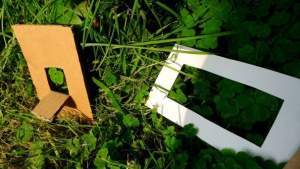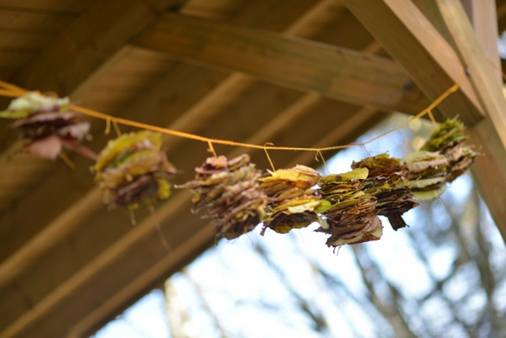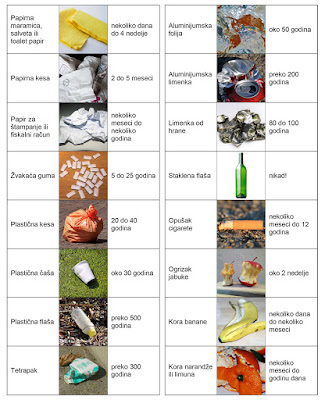Ecological Activities
Teaching outside
Nature is the best playground in the world! Research has already found what we probably all suspect:
Those who regularly go to nature return rested and in a better mood.
Those who regularly spend time in nature like it more and protect it more, engage in nature conservation and behave more environmentally friendly.
Fall in love = to know and protect. The love for nature begins with the fact that we like to go there often, that for us it is not only a space for sports, games or education, but that we are aware of its beauty, fragility, that we can stop and listen, touch, marvel … taste nature with all our senses.
The goal is to get children out into nature, that’s why we want to teach them about nature in nature.
Why to learn outdoors and support environmental activities?
- Learning outdoors is visual, three-dimensional and colourful. It encourages our senses and thinking and it improves attention and concentration, as well.
- What we learn through outdoor experience is stored deeper in brain and is easier to recall.
- Staying and moving outdoors reduces overweight, improves the functioning of the immune system and reduces the number of diseases.
- Contact with nature contributes significantly to mental health and well-being and reduces stress, anxiety and depression.
- Outdoors, children develop not only their knowledge, but also their emotional and social intelligence. Reasons for aggression and violence are reduced.
- Children have been learning outdoors for more than 99% of human history. They are ready for it.
Learning outdoors results in satisfaction of children’s basic needs, increases intrinsic motivation to learn, improves behaviour at school and leads to a better educational outcomes across subjects.
Games to play with your children
Game 1. Acorn matching game you haven't played yet
Material:
- Acorn hats
- Tempera paints and a brush or watercolours
- A piece of white sheet (or other contrasting mat for greater clarity during the game) – not necessary, you can also play on a tree stump, for example
How to do it?
- First of all, you need to know the forest well, where we go for a walk in autumn, because we will need a lot of acorn hats. RED OAK is best for this game because it has big hats, but we can also use other types of oak (winter, summer). We try to find hats that are similar in size if possible.
- Then, we colour the insides of the hats with temperas or watercolours. It is necessary to always have two hats with the same colour, so that we can play Pexeso (memory game) later. More creative children can try to draw something in the middle of the inside of the hat. Alternatively, it can be done with a softer pencil or an alcohol marker (for example, a circle or a cross).
- Finally, we count how many pairs we have, turn the acorns with the stem up and we can boldly play Pexeso.
What we learn from it?
- First of all, Pexeso motivates you to compare individual colours or shapes on the inside of the hat and to use elimination methods.
- The game also practices memory.
- Then, counting, if you add up your pairs at the end (or comparing again, if you make rows of the obtained acorns).
- Moreover, related to fine motor skills, you practice the pinch grip (it is important for writing), as the acorn cap turns best for the stem.
- Finally, you get to know your surroundings better, as you find out where oaks are found and that there may be different species.

Game 2. A window to nature
Create your window to nature whether you are at home or outside. Use twigs, sticks or paper and make a mysterious window that will transport you to other worlds, faraway places and a small world in the grass. If you don’t have twigs or cardboard, just twist a string or jump rope into a circle on the ground.
Material: twigs/sticks/cardboard/frame, knife, string, natural materials and a desire to create
How to do it: Find a few dry twigs, which you tie in the corners into a square or rectangle. You can make a circle or an oval from flexible rods. And then all you have to do is set the window where you want to move = where you focus your attention. Observe the clouds in the sky, life in the grass or on the bark of trees for 10 minutes or more. What did you experience? What kind of grass life have you observed? Did you feel calm or want to explore? What else do you want to explore through the window?
Modification:
- – create a window frame for pictures made of pebbles or paint with chalk
- – create a whole gallery in the open air
- – tell (and write down) the stories you saw in the window
- – play a pebble theatre
- – throw rings made of sticks in pairs and at a target
- – try hanging a window in a treetop and get a tree TV with a very soothing program
– become a moderator and prepare a program about the wilderness around you.


Game 3. Stone weather forecast
- A set of pebbles becomes an easy weather forecast. Just collect suitable stones, paint them, and use them to describe how it is outside.
- At the beginning, mostly the whole class enjoys it, but later only a group of children enjoy to do that for a long time and work with pebbles regularly even outside the window in the classroom. They become “experts” and provide the class with current weather.
Tip: Stones can also be used when teaching foreign languages or different climate zones.

Game 4. Lanterns
The flame of a candle outside opens up new worlds, atmosphere and mystery
- The candlelight game works best in a combination of snow, ice and no wind. The fire lights up the snow and puts up a unique spectacle. Decorate a building, use it in a snowy garden or elsewhere outdoors. Take out the lamps, tea lights, sparklers, build a snow candlestick. Or make your own lantern and you can go for a short walk in the evening after dark. It definitely will be a great experience.
Material:
- a jar, glass paints, (glass crayons, natural materials, glue) string or binding wire, a candle / tea candle
How to do it?
- Prepare a clean glass jar, such that you can carry it without hurting your hands. Either paint the glass with paints or stick different shapes cut out of crepe paper or natural materials on it. Wrap a string or a binding wire around the neck of the jar (it will be a handle). When the glue or crayons on the lantern dry, put a candle inside.
- You are ready for an adventurous walk!
ju!

Game 5. Lanterns made of leaves
Bring home the autumn mood in the form of a leaf lantern. Easily you can have a lot of lanterns and use them as a small autumn gift. Or connect the lanterns into a garland and the autumn decoration is ready.
The goal of being outdoors is primarily to enjoy it together.
It is important that being outside fulfils the needs of children: exploring something new and unexpected in nature, collecting treasures, climbing trees, wading in the grass, etc.
Material:
- a ball of wool or string
- a piece of garden wire or a skewer for piercing the leaves
- coloured autumn leaves (maple leaves are best)
How to do it?
Collect the most beautiful leaves around during your walk.
On one end of the wool, thread a wire like a needle and on the other end, knot one curled leaf as a stopper. Now thread it leaf by leaf.
The more you thread, the longer the garland will be.

Game 6. Rain gauge
It´s raining, it´s just pouring, and we´ll measure it.
Get a rain gauge, a smart helper for measuring rainfall. One bottle is enough – it is the basis of a home weather station. You’ll be looking forward to rain, plus this activity offers lots of learning – measuring volume, measuring with a ruler, number recognition, observing capacity (filling/pouring) and observing weather changes.
Material:
- a PET bottle (the bigger the better)
- scissors or cutter
- a permanent marker
- load stones
How to do it?
First, cut off the top of the bottle (smaller children will ask an adult for help) and put it inside, and „a funnel“ is ready. Through it even heavy rain will pour nicely.
Then, draw a centimetre scale on the bottle.
Find a suitable place outside to put the rain gauge (balcony, terrace, garden) and line it with larger stones so that the bottle does not fall.
Then observe and write down how much rain falls a month.


Game 7. Garbage graveyard
A research experiment that will reveal the secrets of decomposing garbage
- What happens to the garbage we throw away? How long does it take for an apple core to turn into compost, and what about a plastic cup?
Bury the treasure from the garbage and dig it up again in the autumn.
What to do?
- waste samples:
- paper: newspaper, paper, napkin
- beverage cartons: juice or milk box cartons
- plastic: bag, yogurt cup
- metal: can, foil from chocolate, aluminium cap from yogurt
- glass: jar, bottle, mirror
- bio-waste: apple core, leaf, banana peel
- a plank, nails, a hammer, a spade,
How to do it?
- Prepare the garbage you want to use for the experiment (select only a few samples from the list, it is not necessary to use all of them). Together with the children, choose a place where to “bury” the garbage.
- Nail the samples to the board. Place the glass ones loosely on the board or use a nail to make a hook on which you can hang e.g. a jar. Write or draw the order of the garbage on the board or in your diary.
- Dig a hole wide and deep enough to fit the board in and cover it. Don’t forget to mark the “cemetery” with a stick or stone. Leave the waste to rest for at least six months before checking it.
What to do without a garden?
- If you cannot bury it in the ground, place the garbage in a paper box and cover it with dirt. Put the “graveyard of garbage in a box” in a shady place near the house and cover it with a board, so that dogs, cats or rodents cannot prowl in it.
A tip for eager researchers
You can check the waste even earlier than in six months, e.g. to observe decomposing bio-waste after just a few weeks.

Content
- The first action of cleaning parks and schoolyards and recycling collected waste
- The action of creating shelters for animals during the Winter
- Action of giving away bags and informing neighbours about the risks of using plastic
- Making board games from recycled materials
- Creation and positioning of the recycling bins for paper, metal, and plastic
- Making our own compost

